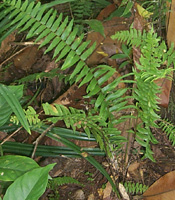
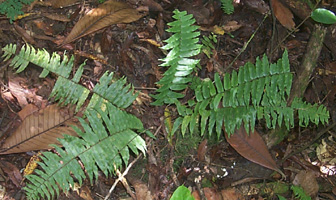


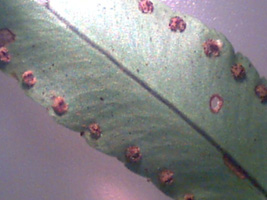
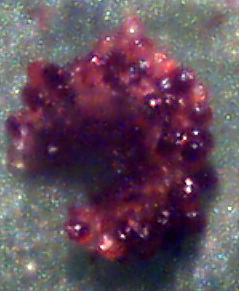
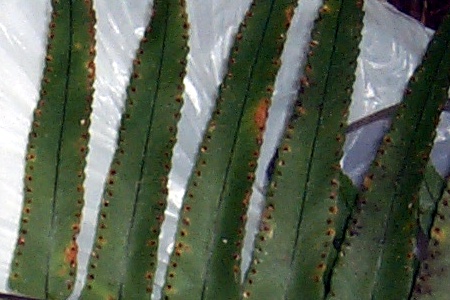
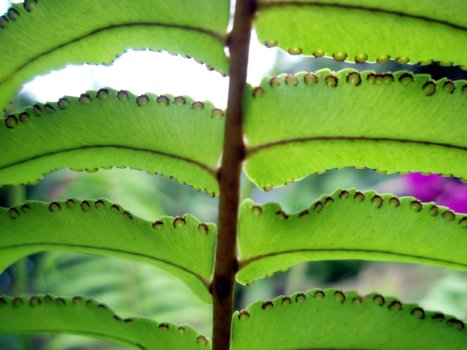
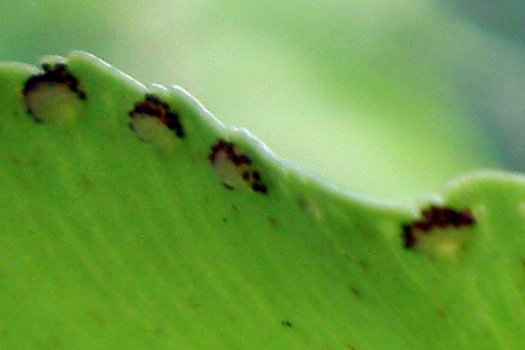
Fronds pendulous, sori in a band at pinnae margins; epiphyte: N. acutifolia
Fronds not pendulous, sori discrete; typically terrestrial
Sunny sites; fronds less than 30 cm long, erect; stipe-rachis hairy
Sori in orderly rows on pinnae margins; limestone: N. hirsutula
Sori irregularly scattered; volcanic clays: N. multiflora
Shaded sites; frond longer than 50 cm; stipe glossy, sori well in from pinna margin: N.
biserrata
rehdil: Terrestrial fern with glossy stipe and rachis. Sori indusia on pinnae margin. Identified as N. hirsutula in Tuhke en Pohnpei. Identified as N. acutifolia in Raynor's flora spreadsheet (N. acutifolia is probably marekenleng). Work remains to be done...
Later that evening Kenye Nipinyuck (Waguk) Mongkeya, (alternatively Kenye Nipikier), shares that the Kosraen name for the Nephrolepis fern is ka. Ka was used to keep water from spilling out of a bucket. In her youth, men carried water buckets on poles slung over their shoulders. The buckets would naturally sway. Ka was placed into the top of the bucket to keep the water from sloshing and increasing the swing of the bucket. A plant-based hydrodynamic damper.
![Kenye Nipikier (Waguk) [Alik] Mongkeya Kenye Nipikier (Waguk) [Alik] Mongkeya](../ethnobotany/e71/2007012550kenye_nipinyuck_waguk.jpg)
Kenye Nipikier is now 84 years old. She turned 84 in early September 2006. Over the course of roughly a decade this author has asked numerous Kosraens if they know the name for Nephrolepis. A nephew of Kenye had said that it had a name, and that his father used to speak of the plant, but the nephew did not recall the name his father had used. The nephew, Tadao Waguk, is renowned for his plant knowledge, and thus when he did not know the name, this author became resigned to the name having been lost. The author is deeply indebted to Kenye Nipikier for her assistance in bring back this almost lost word. Kulo muluhlap!
